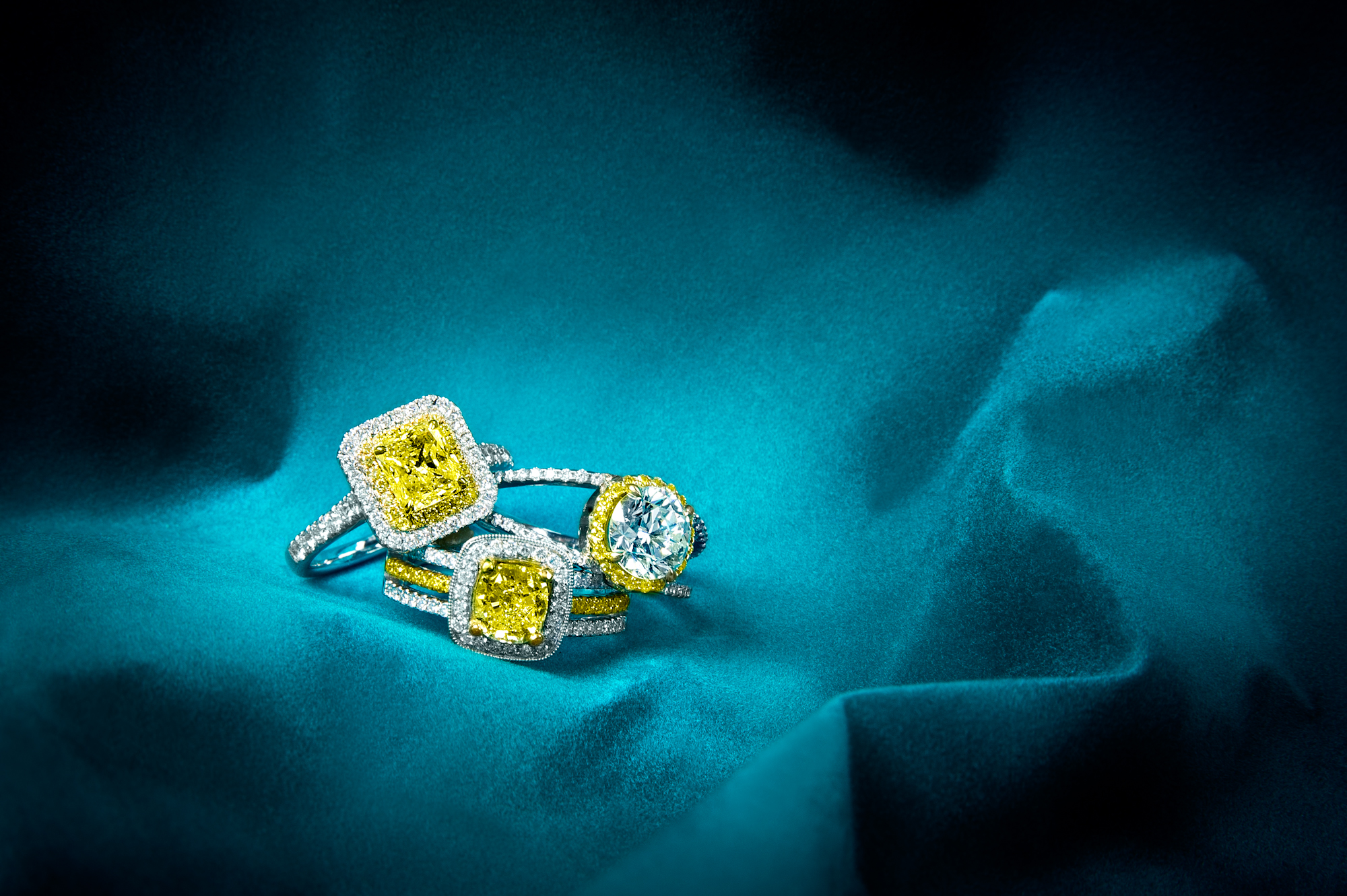Many wonder why diamonds come in different colors, and what makes them so expensive. The mineral diamond is a pure form of the element carbon. The appearance of color in a diamond is caused by either trace elements or internal distortions that are included in the crystal as it forms. Although most faceted (cut) diamonds appear to be white, the vast majority of diamonds that are mined are actually some shade of yellow.
Diamond color is graded on a scale from D to Z. Diamonds with a color grade of D, E, or F are considered colorless. Grades G-J are near colorless. Diamonds that fall in the K-M color grade range have a faint yellow tint. The N-R range has a very light yellow tint and S-Z range is light yellow.
Diamonds can actually occur in almost any color of the rainbow, but fancy color diamonds are much rarer than white diamonds. Their color intensity is graded from Faint at the lower end to Fancy Vivid at the high end.
Yellow diamonds are one of the most popular fancy colored diamonds, and their color is caused by the trace element nitrogen. Because of the way diamonds form, it’s rare for a diamond not to contain any nitrogen at all; hence the rarity of truly colorless diamonds. On the flip side, a deep saturation of nitrogen creating the “canary” bright yellow color is also rare.
Brown diamonds are the most commonly occurring fancy-colored diamonds. The color brown is caused by internal graining, a distortion in the diamond’s crystal structure. This same kind of distortion is also responsible for creating pink and red diamonds. Red and blue are the rarest colors of diamonds. Less than 20 stones have so far been certified as red diamond. Blue diamonds are colored with the trace element boron.
Fancy gray diamonds are colored with hydrogen, as are violet diamonds, whose color leans more towards a gray tone. Green diamonds get their color from being exposed to natural radiation in the earth.
Fancy white diamonds are caused by the scattering of light by thousands of microscopic pinpoint inclusions, and have an opalescent look that sets them apart from typical white diamonds.
Black diamonds are actually so heavily included with black crystals that they appear to be solid in color. Irradiation is often used to make the black color look solid; a natural black diamond will have a salt and pepper look under magnification.
An oddity in the fancy colored diamond world is called the Chameleon diamond. These are typically olive green and can temporarily change color to greenish-yellow when exposed to heat or kept in darkness and then exposed to light.
Visit our showroom in Old Town to see some of our amazing colored diamonds.







